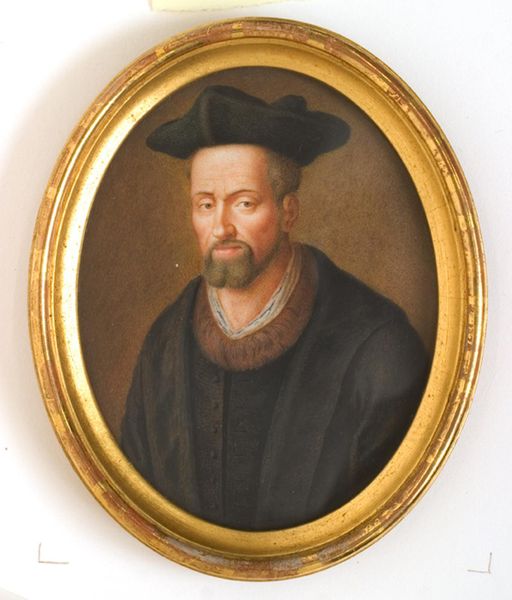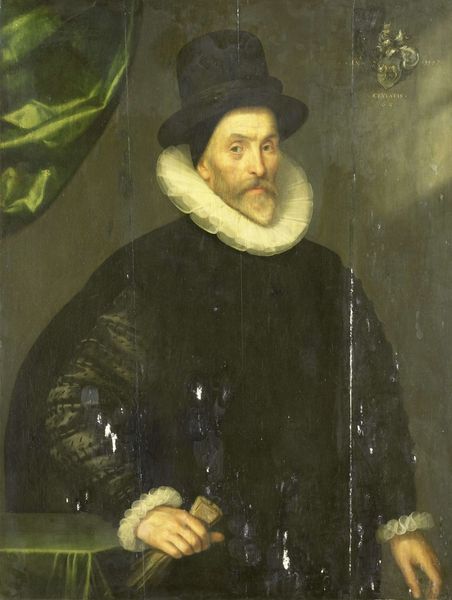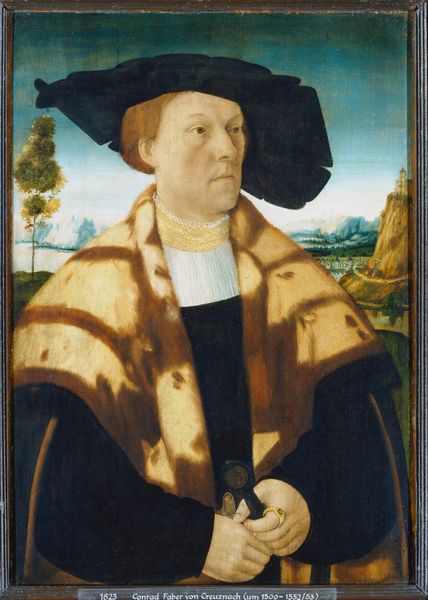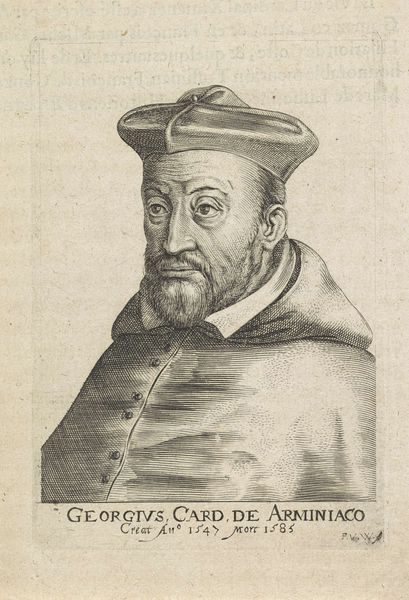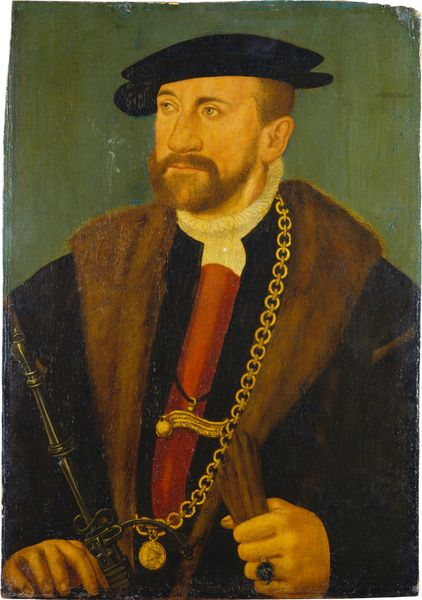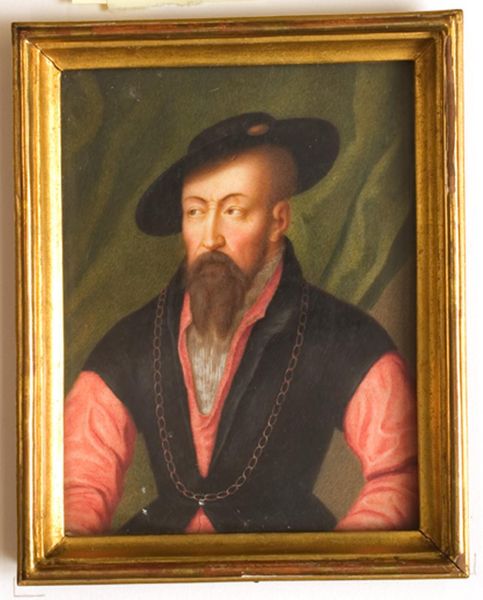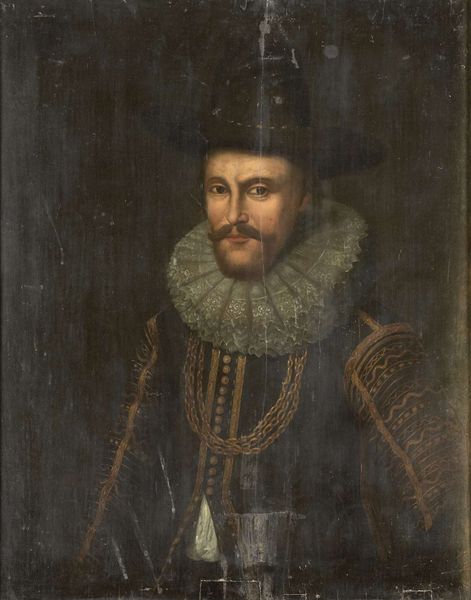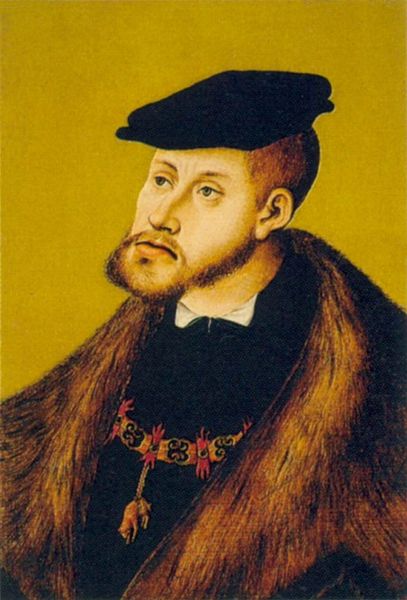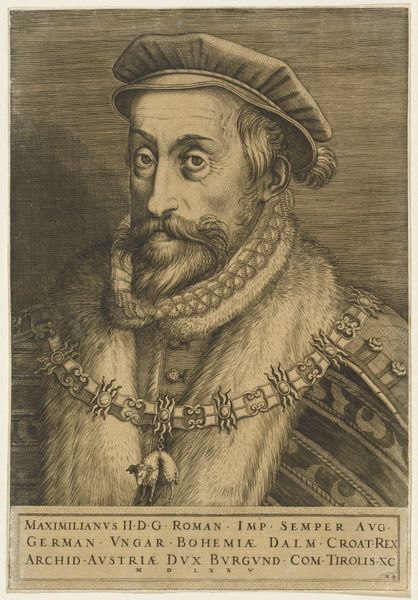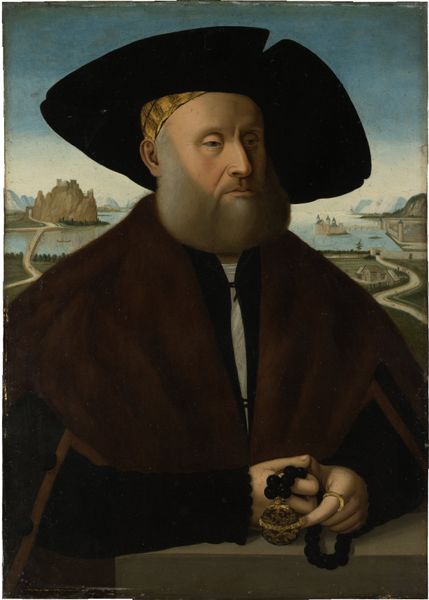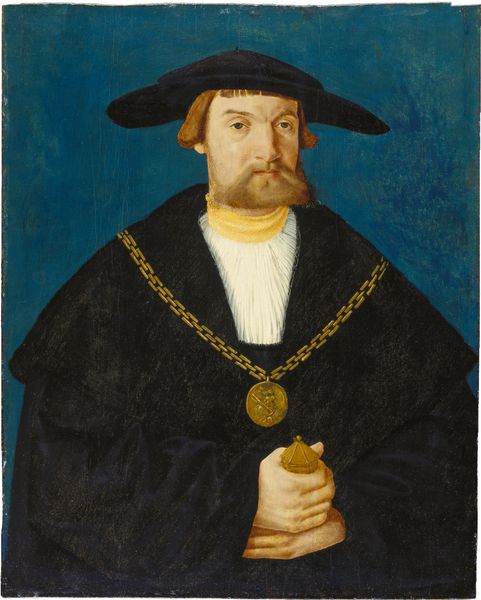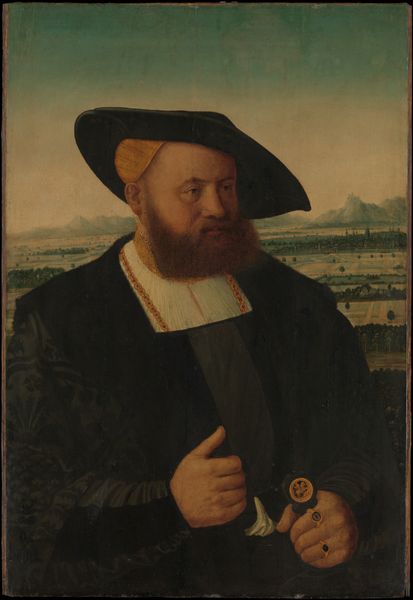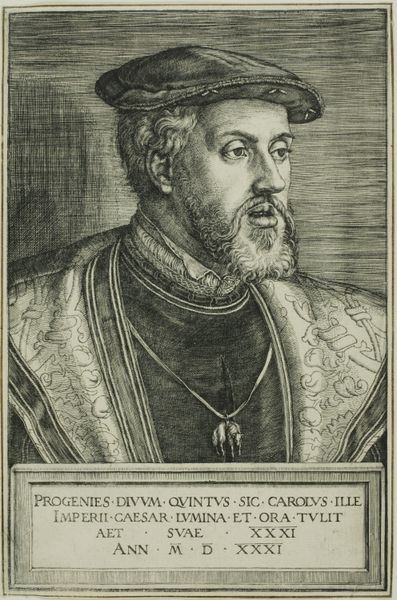
painting, oil-paint
#
portrait
#
baroque
#
painting
#
oil-paint
#
history-painting
#
portrait art
Dimensions: 11.6 cm (height) x 9.1 cm (width) (Netto)
Curator: Before us is *Mandsportræt*, a portrait dating back to 1740, currently held at the SMK, Statens Museum for Kunst. Editor: The muted palette immediately sets a somber tone. It’s remarkable how such restraint amplifies the presence of the subject, forcing you to meet his gaze directly. Curator: Indeed. Note the precise, controlled brushwork and the detailed layering of the oil paint. See how Gardelle modulates light and shadow. The figure’s face is modeled with extraordinary care, creating a subtle interplay of form and texture. Editor: Absolutely, the meticulous depiction enhances the feeling of formality, but my attention keeps returning to the collar; the crisp white linen a potent symbol of status, perhaps even moral purity, juxtaposed with that heavy, dark garment. It speaks volumes about societal hierarchies. Curator: Yes, the collar’s structure starkly contrasts the curves and softness of the face. This contrast, combined with the restrained composition, is the source of visual tension within the portrait. The dark clothing is certainly functional and stylish, of the Baroque Era. Editor: It feels like a calculated austerity. Given that Gaspard de Coligny, as indicated by the text on the portrait, was a prominent figure in the French Wars of Religion, one can interpret the subject’s appearance through the lens of that era's religious conflicts; he was assassinated in 1572 and yet his portrait appears more than 150 years after. The portrait serves to recall a certain historic memory, no? Curator: Certainly, his historical significance adds weight to the visual interpretation, imbuing the object with complex symbolic dimensions. The image evokes historical narrative in muted colours and the figure-ground relationship, along with other basic elements, conveys all the historic weight the portrait could achieve. Editor: Seeing how the artist rendered the sitter provides insight into not only aesthetic preferences, but into the historical role and societal perception of the historical Gaspard. A face from the past, presented to us in the present, through carefully-chosen visuals. Curator: Indeed, and examining its inherent structural and material features, one might understand a certain relationship the artist is developing with the object, giving it the weight the commissioner may require of the image. Editor: Beautifully put, it is as much a statement about historical relevance as it is an artistic declaration.
Comments
No comments
Be the first to comment and join the conversation on the ultimate creative platform.
